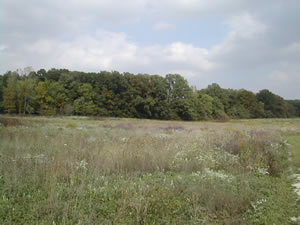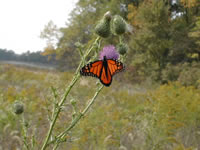


Stop 3: Tall-Grass Prairie

Tall-grass prairies are typically found in areas that are saturated during the first few months of the year. This water drowns any invasive woody plants, allowing for the successful growth of grasses and flowers during the summer. In Indiana, this ecosystem was historically located in the western part of the state. Prairie grasses are unique due to their ability to regenerate after drought and fires. The plant's root systems are to thank for this. The roots of big bluestem, a common prairie grass, can extend more than seven feet below ground, which allows them to remain moist during times of drought and not be burned during times of fire.
 Many species thrive in the prairie ecosystem including
snakes, birds, insects, and small mammals.
Many species thrive in the prairie ecosystem including
snakes, birds, insects, and small mammals.
Links:
Our
Land, Our Literature: Prairies
Butler Prairie
Regional
Trends of Biological Resources — Grasslands
A
Prairie in Upland Indiana?
Source:
Samson, Fred B., Fritz L. Knopf, and Wayne R. Ostlie. "Grasslands." Status
and Trends of the Nation's Biological Resources. Ed. Michael J. Mac,
et al. Vol. 2. Fort Collins, CO: U.S. Dept. of the Interior and U.S.
Geological Survey, 1998. 437-72. Northern Prairie Wildlife Research Center.
10 Dec. 2003 <http://www.npwrc.usgs.gov/resource/2000/grlands/grlands.htm>.
The Loblolly Virtual Nature Trail was created as a part of the Our Land, Our Literature website.